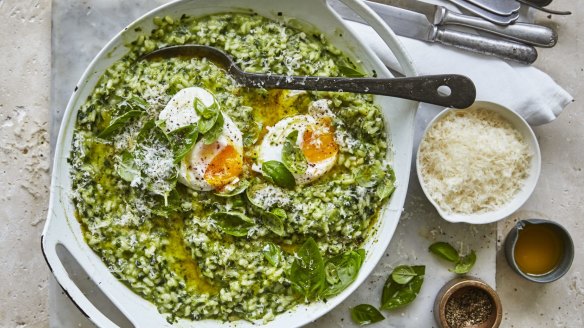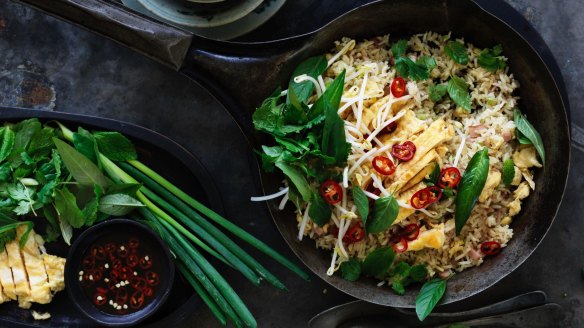The secrets to cooking rice perfectly (plus 30 recipes in under 30 minutes)

- 30 rice and easy recipes ready in 30 minutes or less
- Kylie Kwong's everyday fried rice (pictured, below)
A packet of rice in the kitchen cupboard is a life-saver. But which rice? Every rice is different, and responds differently to the cooking process. This is due to the starch content, and the magical properties of either amylose or amylopectin.
Long-grain rice such as fragrant jasmine and basmati has more amylose, which makes for a drier, fluffier end result. The rice grains stay separate when cooked, which is just what you want to accompany your Thai curry or rogan josh – but not what you want when you make risotto.

Short-to-medium grain rices such as the Italian arborio, Spanish bomba and Japanese sushi rices are high in amylopectin, a type of starch that dissolves into creaminess when cooked, without the grain turning into mush. These rices are distant cousins of glutinous rice, which, as its name suggests, is extremely sticky.
Washing the rice is, again, all about the starch. For a nice, dry, fluffy rice, rinse the starch off the rice beforehand. Rice for risotto, on the other hand, should not be washed because starchiness equals creaminess.
A great risotto is all about timing and temperature. The time-honoured technique of cooking the rice by adding a little hot liquid at a time, brings out the starch and allows each grain to slowly expand as it absorbs the stock, swelling into tenderness, with just a tiny bite of starch inside.
Stirring the rice as it cooks helps rough-up the surface of each grain, letting more amylopectin leak out to create creaminess.
Cook over too high a heat, however, and you will evaporate your broth before the rice has a chance to absorb it. Too low, and it will take forever to cook the rice.
Your stock needs to be hot, because adding cold stock would lower the temperature of the rice and cause uneven cooking. Stir often, but not relentlessly – it's OK to back off now and then. Just stay in the zone, so you can add the broth just before the rice asks for it.
It will take about 10 minutes to get the onion, butter, rice and wine stage done, before you start the process of adding stock, stirring, adding stock, stirring. Start tasting the rice after 15 minutes or so, and stop when the rice is swollen and tender.
The wetter Venetian-style risotto is considered the most elegant, and will move in a slow wave when the plate is tilted.
Beating in butter and parmesan at the end – a process Italians call the mantecatura, or "mounting", is a clever way to stop the rice cooking even further by introducing something cold, while at the same time enriching it and giving it a glossy finish. Nobody, by the way, has ever regretted being overly generous with either butter or parmesan.
Appears in these collections
The best recipes from Australia's leading chefs straight to your inbox.
Sign up- More:
- How to
